My Nightmares Come in Waves
People say that you should face your fears to overcome them. Is that why I was curious to see the world’s largest waves in Nazaré? In the past, my most reoccurring nightmares have been about monstrous waves. In the dreams, I’m standing on an upper-story balcony of an old building. I’m looking out to sea as a menacing wave swells and lifts its crest high like a gray-green mountain heading in my direction. I’m looking directly into the palm of this ominous approaching hand, waiting for the thunderous slap.
In November. three months after settling into Portugal, we rented a car to see the big waves at Nazaré. From Setúbal, it will be about a one-and-a-half-hour drive. We reached our Airbnb late at night, so wave-watching would have to wait until the next day.
We stayed in a quiet neighborhood on a hilltop somewhere above the historic part of the old fishing town. In the morning, on a quest for coffee and sandes mista (a mixed sandwich, usually consisting of ham and cheese), we found ourselves in the narrow streets of Nazaré’s old town in less than 10 minutes. We wandered the typical Portuguese maze of narrow streets full of restaurants that probably won’t open until 7 o’clock, eventually finding the sandwich and coffee breakfast that we hoped for.
On our way to Forte de São Miguel Arcanjo to see the big waves, we found some souvenir shops. The restaurants wouldn’t open until noon, but we paused here and there to check out the lunch and dinner menus. Nazaré is a lot more than being a haven for surfers and the attraction of its huge waves. There’s a bustling nightlife here in the lower city and the clifftops of Sitio da Nazaré offer inspiring views of the long stretch of beaches and the red-tiled rooftops of the town below.
The largest waves on earth hit the shores of Nazarè between November and February, so the waves we witnessed in November were just the start of the big wave season. A banner informed us about a surfing challenge taking place on the waves today. Just past the banner is the sculpture of the Veado Surfista, which translates to“surfing deer”. It’s a sculpture that commemorates the legend of Nazaré that I will share with you in a bit.
Further, down the trail, a photographer with his camera on a tripod was perched upon a grassy slope looking out to sea. Everything we’d seen so far suggested that we wouldn’t be disappointed today. We’ll see waves and surfers.
High, Dry, and Free of Fear
There is a narrow ledge between the Nazaré lighthouse and a cliff that overlooks the crashing waves below. The rocky promontory with the lighthouse that sits atop, is the perfect vantage point to view the waves and surfers. I was awestruck by the front-row views of the monstrous waves. I was fascinated, but I wasn’t terrified. It was amazing to have this birds-eye-view. There was only a slight similarity to the colossal waves of my nightmares. I’m wondering, does this means that I’ve faced my fears? Presently, the waves in my nightmares haven’t come back to haunt me. Perhaps learning how to swim would help too.
Forte de São Miguel de Archanjo. There’s more to see here than just the waves.
The Nazaré lighthouse stands atop Fort São Miguel the Arcanjo (Saint Michael the Archangel). We watched the waves from atop the cliff, finding ample room at the waist-high stone wall. The surfers seem to hit the waves early in the morning, and we were lucky to watch them in action, our reward for arriving early as spectators.
Ironically, the lighthouse, meant to protect seafarers by warning them away with a beam of light, now lures people from around the world because of its panoramic views and side views of surfers propelled by massive walls of water.
As we stood watching the spectacle of waves and surfers, the doors of the 1577 fort opened. We paid our 2 euro and entered. What we would find on the other side would send me on a quest for something special. The prize of venturing into the unknown is that it often opens the door to surprise. You never know what you’ll find. While the waves to the north of the cliffs roar and tumble toward the beach, the southern view looks down the sandy coast, with gentler waves licking the coast. Views of Praia Nazaré with its picturesque white buildings and red-tiled rooftops reveal the maze-like layout of the town.
We climbed to the top of the fort where the lighthouse sits, beautifully red against the blue sky, with more birds-eye views to the north and south. This is the place to be to get the best panoramic shots of Nazaré.
My Discovery of Whimsical Beauty
Below the lighthouse platform is yet another terrace with more stunning southern views. I was delighted to find colorful ceramic seagulls standing on the rustic fort walls, looking out to sea and Praia Nazaré. I was attracted to them like I am to wriggly little puppies. Whoever created these charming pieces of art truly captured something as magical as their surroundings are spectacular. Each ceramic bird was illustrated with bits and pieces of the life of Nazaré. The birds have scenes of waves, competing surfers, the lighthouse, and depictions of the deer that played a role in the legend of Nazaré.
I admired the art and details of the seagulls too. The glass-like glazing, the rough clay surfaces, and the etching into the ceramic surface add a wonderful mix of textures to the surfaces. I could almost imagine an internal mechanism that would animate these creations to turn their heads, ruffle their stony wings, and squawk at tourists while being admired. Another idea popped into my mind: I want one! Maybe when we explore the shops in town we’ll find the artist’s gallery. I was hopeful.
The Surferwall at Forte de São Miguel de Archanjo.
Leaving the seagulls behind, we entered another doorway and found another unexpected collection- a colorful display of surfboards. In 2019, Pedro Scooby, a charismatic surfer from Brazil, had a near-fatal surfing accident. The wave he was riding ultimately consumed him and it took some breathtaking moments to find him in the whitewater. Fellow surfer, Sebastian Steudtner, who witnessed where Scooby was engulfed, rushed out into the waves and found Scooby.
After being pulled from the sea, a jet ski patrol boat rushed the surfer to the beach and revived him. Two years later, Pedro Scooby nailed an incredible ride on a mammoth wave, again at Nazaré. Scooby donated his surfboard after his inspiring ride and since then other surfers have contributed their boards to what has become known as The Surfer Wall at Nazaré. There is now a collection of about 36 colorful surfboards, signed by the surfers who donated them. The exhibit includes signage about each surfer’s accomplishments on the waves of Nazaré.
Nazarê’s Funicular/Teleférico
The city of Nazaré is divided into two sections- the Sítio on the highlands and the beach area of Nazaré (Praia da Nazaré). On our brief stay, we experienced a little of both, but for our meals, we decided to wander through the narrow alleys of the beach area, especially because of the area’s dining choices. The Sítio and beach area are connected by a steep walking path that’s quite nice to walk in the evening when it’s less hot. It’s a decent workout. The other choice is to use the funicular which is a push-pull, tracked cable system that is the perfect transportation system for steep inclines. A one-way ticket, as of 2023, is 2.50 euros.
At the funicular station, it’s impossible to miss the huge ceramic mural on the walls. The playful depiction of life in Nazaré was already familiar to me and I understood immediately that this was the work of the same artist who created the ceramic seagulls at the lighthouse, especially with the inclusion of more whimsical seagulls. This time, there was a name: Mario Reis.
With the artist’s name, I could finally do a better internet search. If there was a gallery or shop in the area, I wanted to know about it now before driving back to Setúbal. So, back at the AirBnB, after editing the day’s photos, I started my search for the seagull artist. Other than the seagulls at the lighthouse and the wall in the funicular station, I saw no other trace of the artist in the city, I would have to spend more time searching once back in Setúbal.
The Legend of Nazaré
After seeing the Surfing Deer (Veado Surfista) sculpture near the lighthouse I was curious to learn more about the legend. It must be an interesting legend to incorporate a deer’s head with a man’s body and a surfboard at its side.
In brief, the legend began in September 1182 with a Spanish officer named Dom Fuas Roupinho began chasing a deer. The deer approached a cliff. As Dom Fuas approached on horseback, a heavy fog appeared and he became separated from the rest of his party. He realized that he was near a grotto where a statue of the Virgin Mary and Infant Jesus was admired and worshipped. Realizing his predicament near the cliff’s edge, Dom Fuas prayed aloud to the statue. As if his prayer was answered, his horse stopped at the edge of the cliff and his life was spared.
He walked down to the grotto to give his thanks for the miracle that saved his life. He ordered his party to find workers to build a chapel to encompass the grotto to protect it and allow others to pray to it.
The Pursuit
I had some luck finding the seagull artist. At least now I knew his name. I found a YouTube video showing Mario at work drawing and transferring his ideas into fresh clay. He combines several ceramic techniques and traditional Portuguese tile glazing methods to bring his unique pieces to life. Despite being fascinated by watching Mario work on the video, I still had no contact information to try to adopt our own seagull.
I decided to consult with my old pal Instagram. Instagram is a platform where I have been posting my daily travel adventures. (If you like, you can follow me at vibranttravelclyde on Instagram).
Mario Reis
Jackpot! I found Mario Reis! I’m a bigger fan now that I’ve see more of the fantastic work that he posts on Instagram. While there was still no standard contact information, I decided to use the “message” feature to try to reach him. I hoped he would see my simple message that I admired his work and that I would love to purchase one of his seagull creations. Although truth be told, his work is not limited to seagulls. The wall at the Nazaré funicular was proof of that.
I was surprised the next morning when I had a response from Mario. He told me that he would be happy to make us a seagull! He was apologetic that we would have to wait until he finished a commission that he was working on. I was elated about making contact and beyond excited that sometime soon a beautiful ceramic seagull, indigenous to Portugal, would be making its home in our living room. All I would need is patience.
I followed Mario’s Instagram posts and learned more about the artist. He’s a 5th-generation ceramic artist who didn’t follow in his forefathers’ footsteps right away. He loves to surf and that has inspired him with themes of giant waves, seagulls, surfboards, the Nazaré lighthouse, and fish that frequently appear in his work. Eventually, I began to see glimpses of the commission he spoke of, with the theme of cats, other creatures, leaves, and ocean-like textures making up the details of the piece.
The last bits of anticipation were the photos of a huge display case that awaited the arrival of the piece. It would be another eye-catching gem of public art. The final piece was eventually posted with an apparent celebration for its unveiling. The photos of the finished piece showed how all the component pieces fit together. Someday, hopefully when we pick up our seagull, we’ll be able to admire this work entitled, Conversas de Bairro (Neighborhood Talk).
The unveiling of the commission meant something more to me. It meant that, with the commission now completed and installed, Mario could start work on the seagull. In subsequent posts, I found that he was working on a “colony” of new seagulls. In Mario’s words, “This family of gulls has been increasing. In the drying process, some will fly to the United States, others to Austria, England and some will stay in Portugal.”
Caldas da Rainha
We were visiting California when I received a text from the artist that our seagull was ready for pickup. We’d have to wait until our return to Portugal to schedule a date to pick it up. Although several of the new seagulls were posted online, we still had no idea what seagull would be ours and how our seagull would look. Each seagull is unique. After returning from our trip, we scheduled a time to drive up to Caldas da Rainha to meet the artist and pick up the seagull.
Our last trip to Caldas da Rainha was in 2019 when we traveled from Porto to Setúbal in search of a possible city to move to one day. We liked Caldas da Rainha enough to consider it as a possible choice, but that was before we visited Setúbal. We liked the layout of the Caldas, the beautiful Dom Carlos I park and produce market. The beach is only a 13-minute drive away. Lisbon is just over an hour’s drive south. In reflection, Setúbal’s closeness to the Sado River and a 40-minute drive to Lisbon were two features that made it more attractive to us. We have no regrets about our decision. Luckily, we can always visit Caldas da Rainha and neighboring Óbidos for occasional visits.
We scheduled a 2-day stay to revisit the city, and we opted to re-explore the shopping alleys and the Carlos I Park. We also visited museums that we missed on our first trip. Our next mission was a walk about 15 minutes northwest to see Mario’s commissioned public art piece that I described earlier. I’m beyond words to attempt to describe it. I can say that it is an amazing piece, reminiscent of the detailed 3-D mosaic in Nazaré with brilliant colorful tiles filled with whimsical flora and fauna themes. It’s far easier and fun for the eyes to share photos of the piece.
Our Seagull
The next day we drove out into the countryside north of Caldas. Our low-powered rental Fiat grumbled as we climbed the foothills, passing small communities on our way up to Mario’s place. We parked our car on the side of the road and saw Mario waving to us from the yard.
What a great guy! We also had the pleasure of meeting Mario’s wife. They are such lovely friendly people, so easy to talk with and it was so helpful that they both speak English.
Mario opened up his workshop where his two dogs couldn’t wait to meet us before they were ushered outside to play on the lawn. Then he introduced us to our seagull!
We couldn’t take our eyes off of it. Firstly, it looked much larger than the ones we saw at the Nazaré lighthouse. Indoor surrounding makes it appear larger. The colorful glaze work glistened and contrasted with the areas of rough unglazed surfaces. Etched details added texture to the design. The scaled fish illustrates the area’s fishing community with sprouting deer antlers alluding to the legend of Nazaré. The bird’s left side, as Mario explained it, depicts surfers crowding the waves on a busy day. On its chest is the Nazaré lighthouse surrounded by the aura of the sun.
We momentarily left the seagull behind as Mario walked us down the slope of his property to meet his sweet goat. The dogs decided to accompany us. I had been looking forward to this day, not only to finally adopt the seagull- the seagull that I felt so enamored by even before its birth after meeting the rest of his flock in November in Nazaré. But I was also looking forward to meeting the artist who had been so kind with his texts. I’m grateful to him for so diligently responding to my messages and creating a unique piece of art for us.
We brought our new treasure back to our Airbnb. Mario had already nested it in a cardboard box. We set it in the trunk of the car surrounded by our backpacks to make sure it was protected. Back in Setúbal, we carefully removed it from his cardboard nest and placed him on the cabinet in the living room. He looks perfect there.
I was happy that I didn’t ask Mario for specific colors of glazes, or what imagery he would include. After being completely mesmerized by all of the artist’s work that I’ve seen, I knew I would appreciate the stories about Nazaré and the sea that make up his repertoire. I believe that art, especially from artists whose collection of work evokes consistent joy, merits expressive freedom. We were not disappointed. The whole experience of pursuing this seagull was entirely remarkable. From discovering the ceramic gulls in Nazaré to bringing one home with us to our new home in Setúbal.
Our seagull encompasses the story of Nazaré and our pursuit of a radiant work of art. Meeting the incredible artist, Mario Reis was certainly a highlight. When you visit Nazaré, I hope you’ll find some big waves, and I also hope you’ll be enchanted with Mario’s seagulls on the fort wall. By the way, we named our seagull Mario





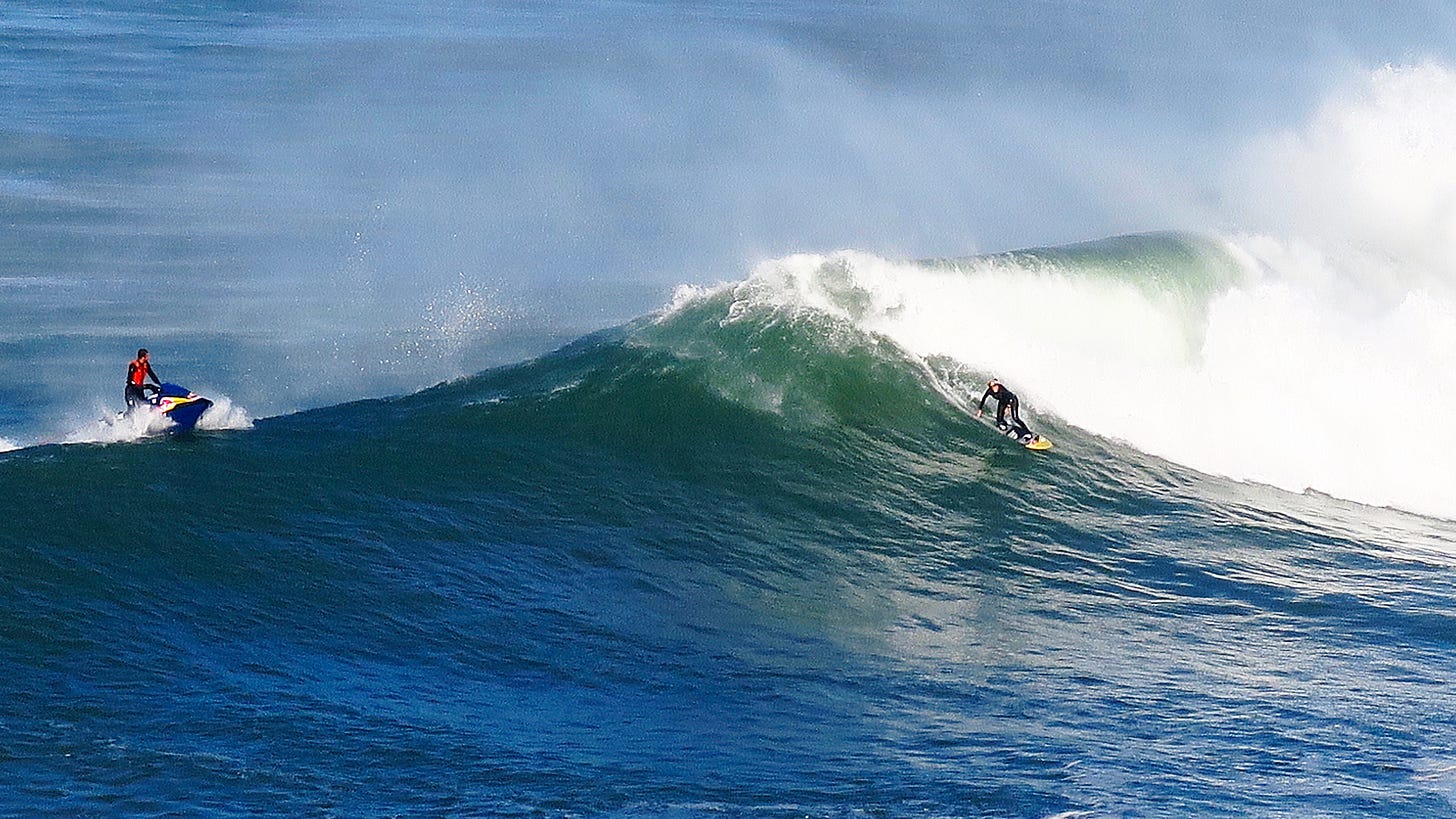

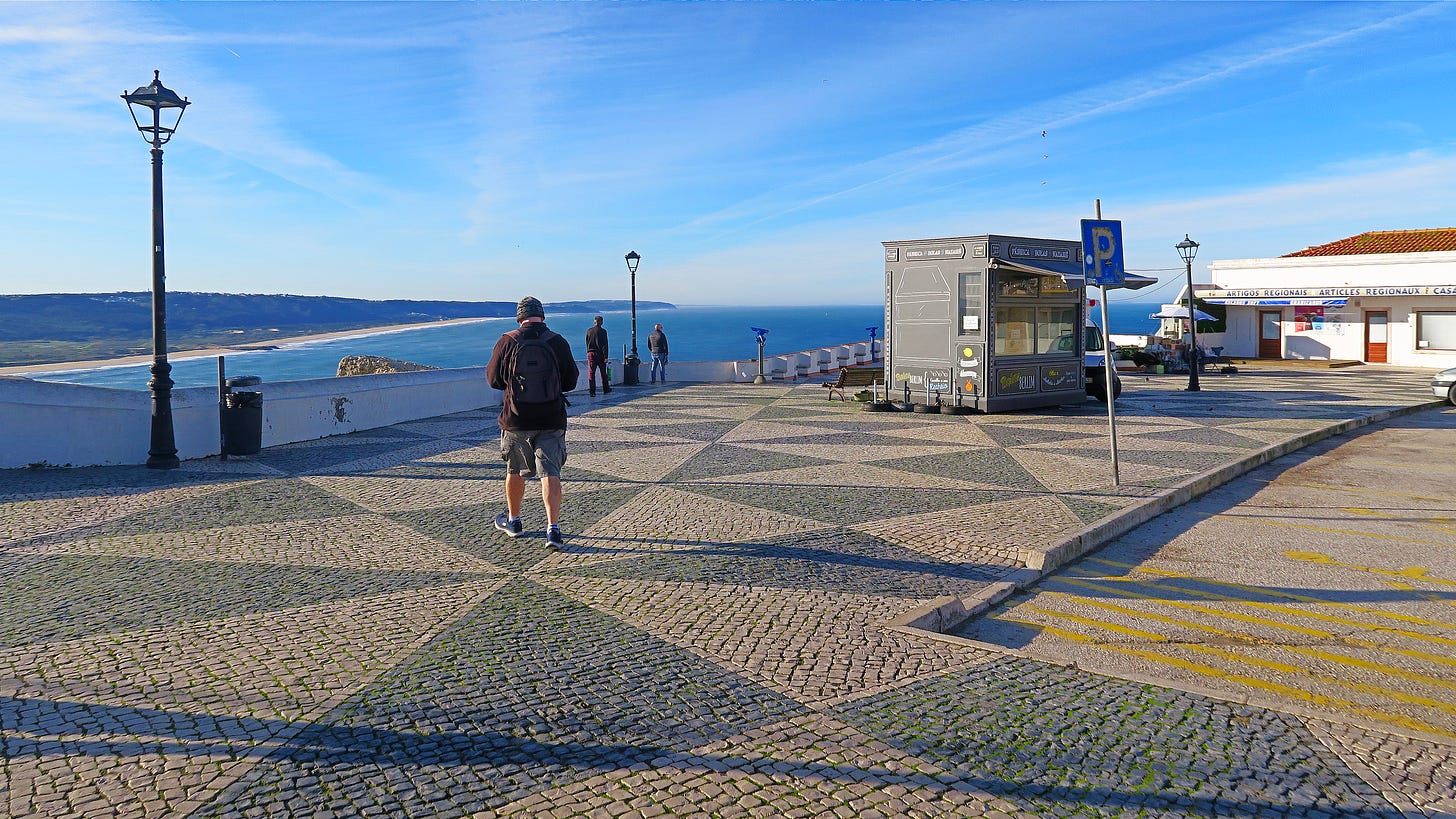
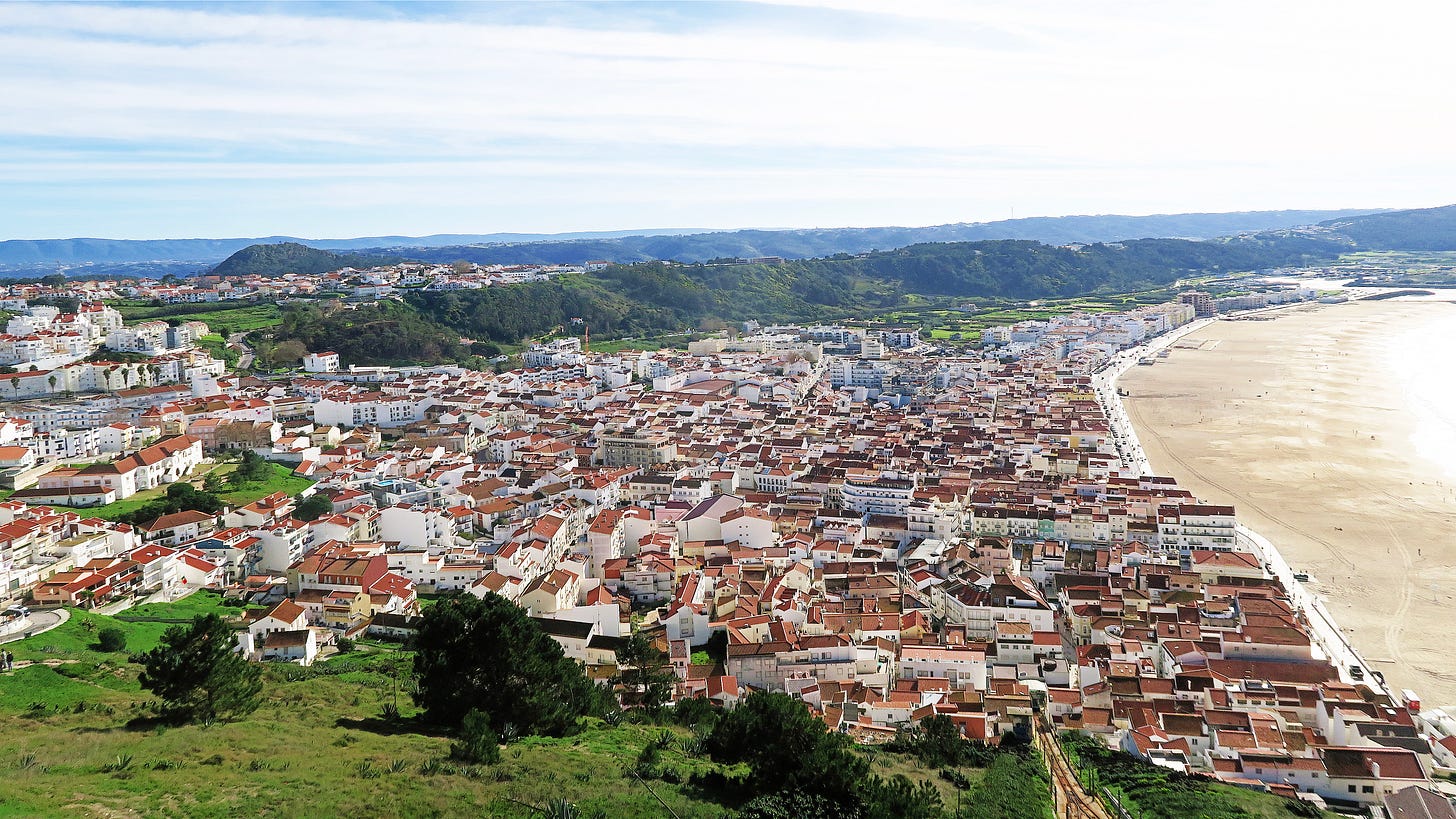
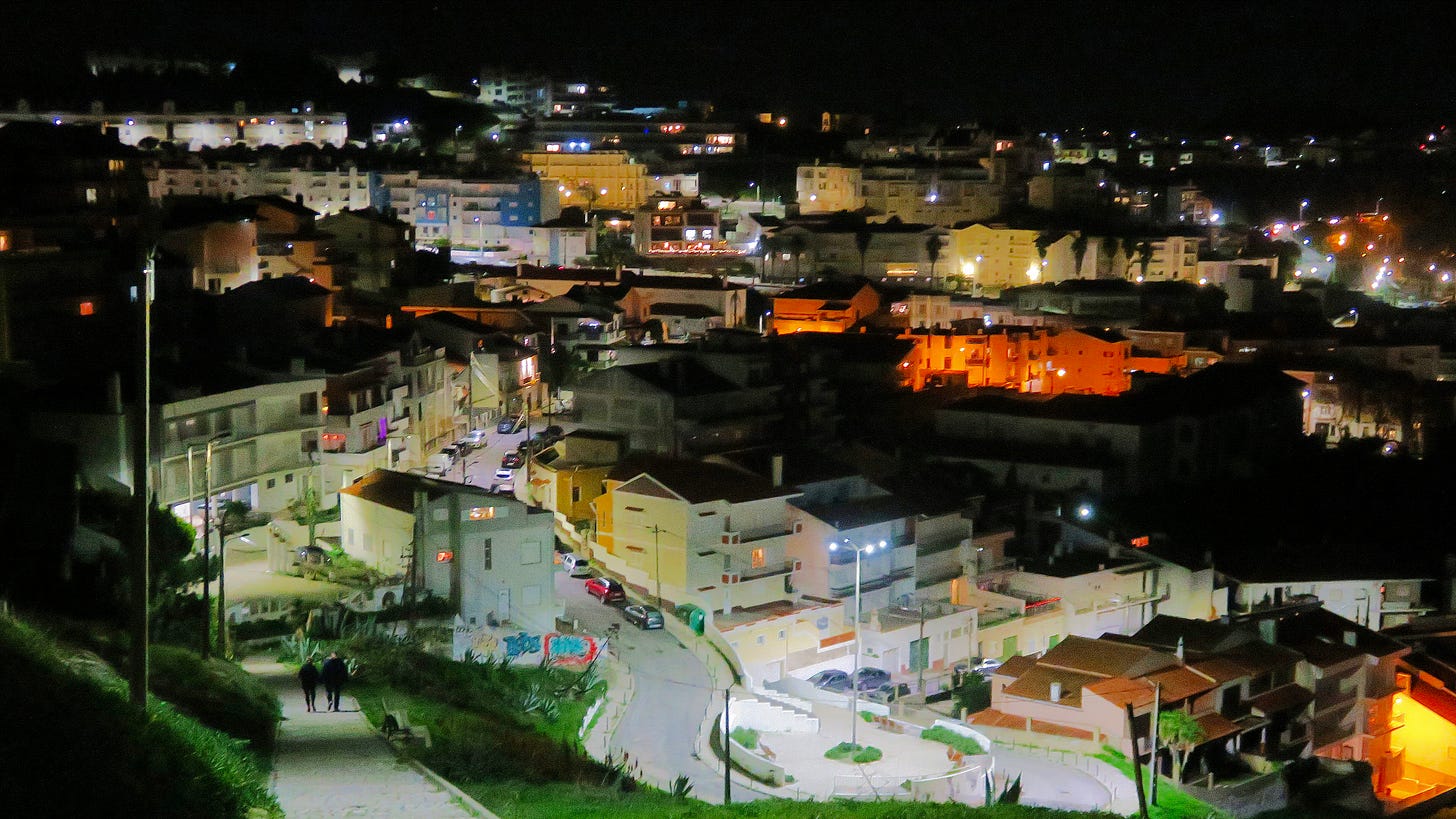
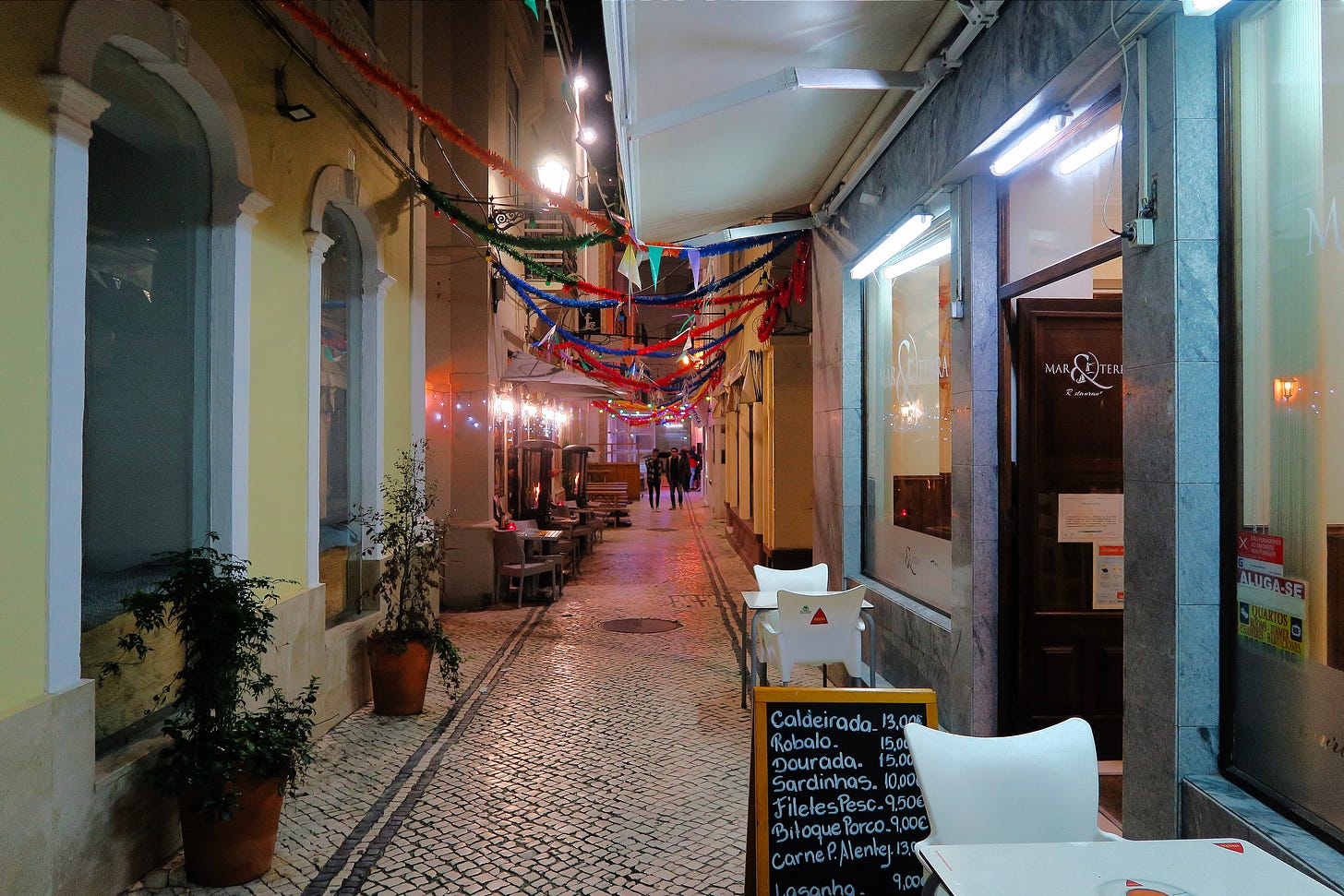
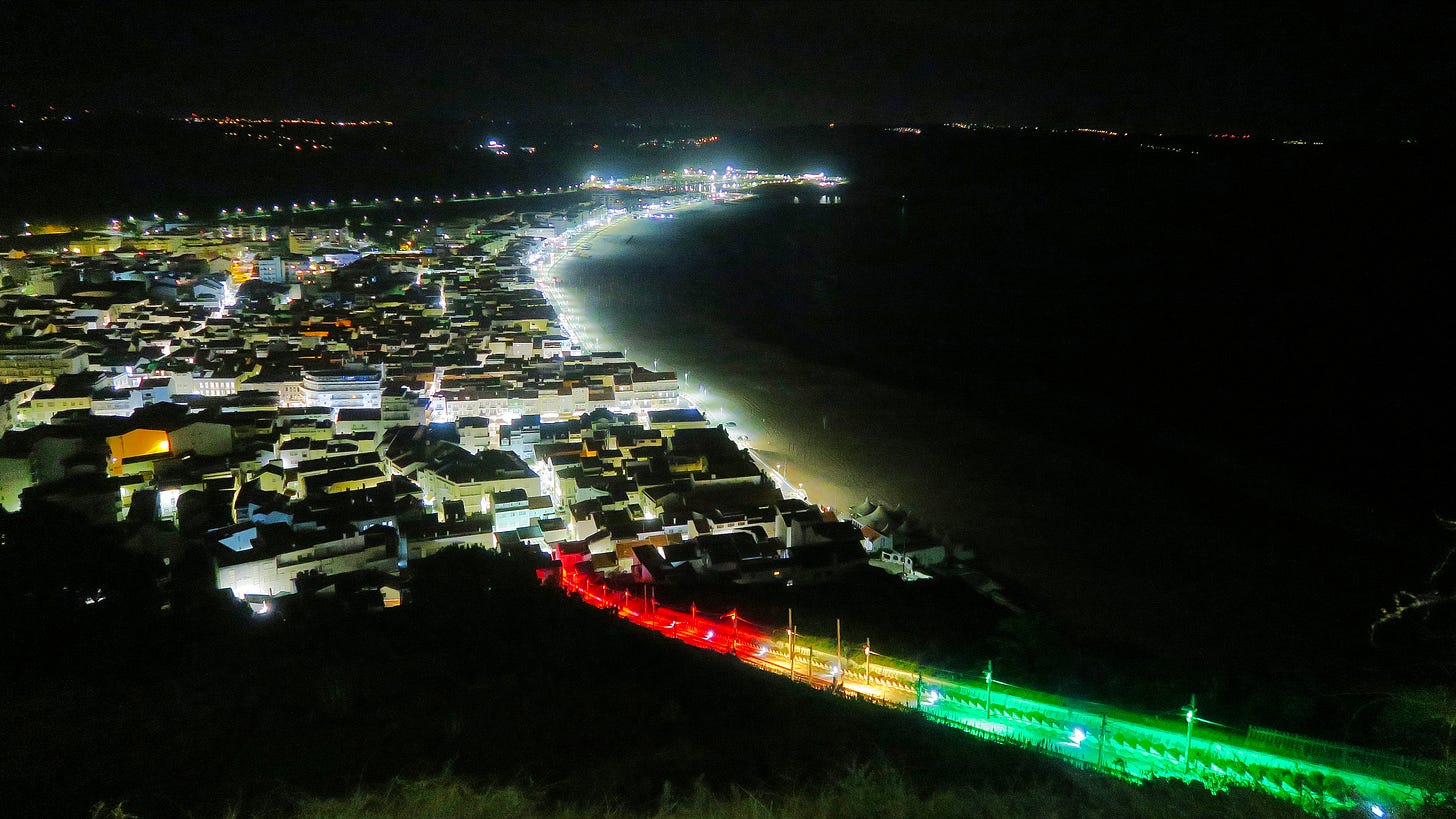

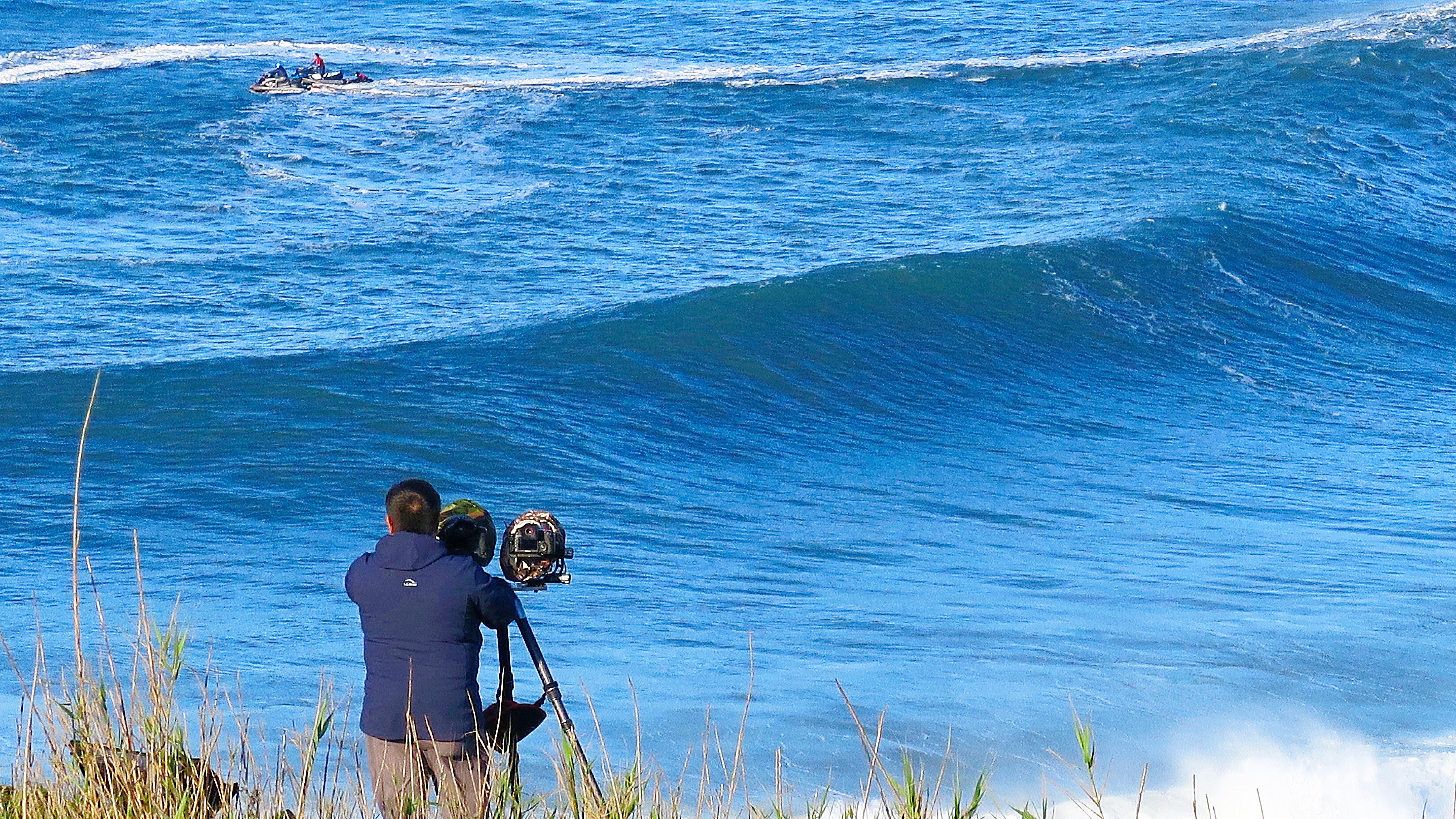
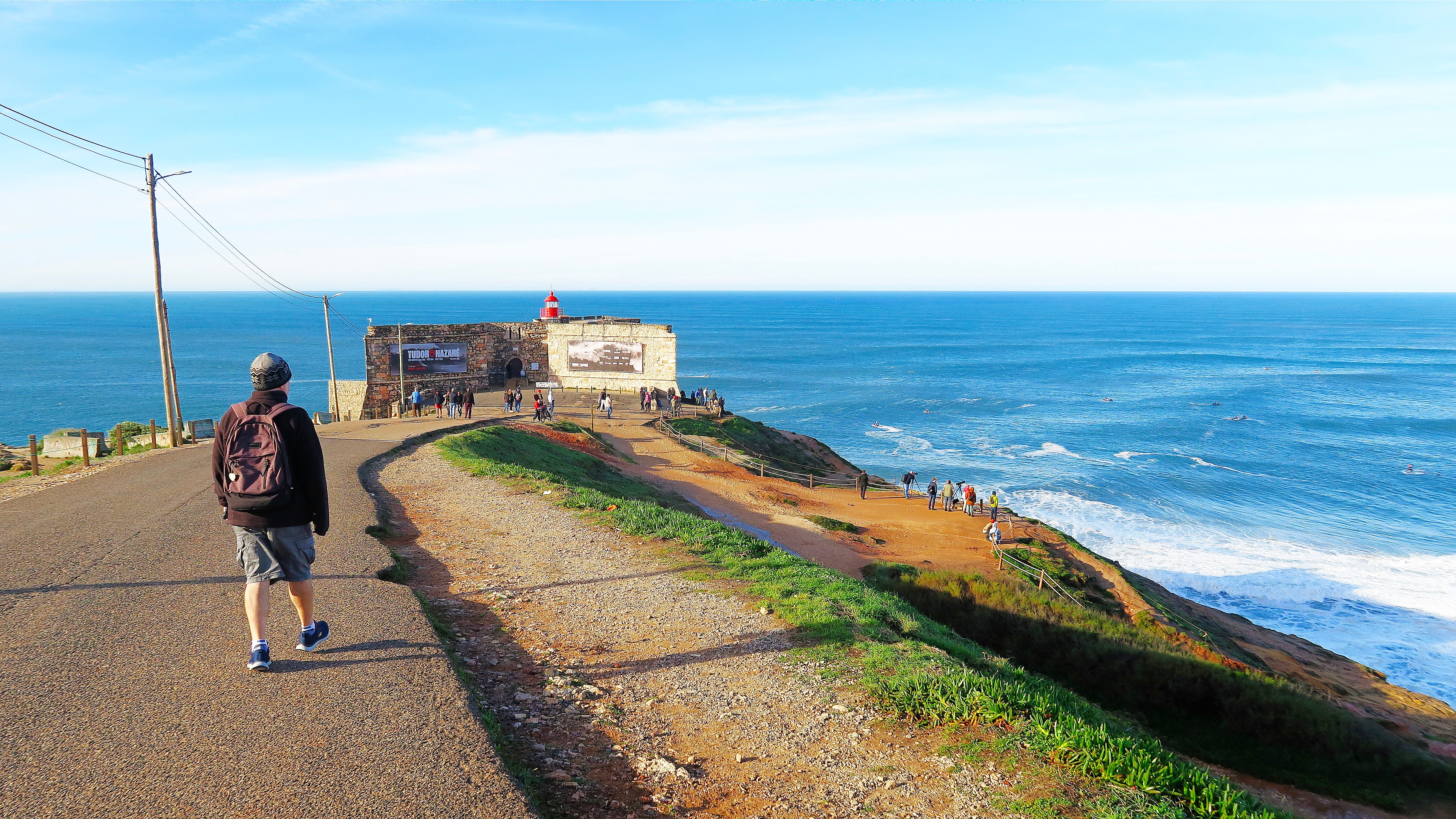

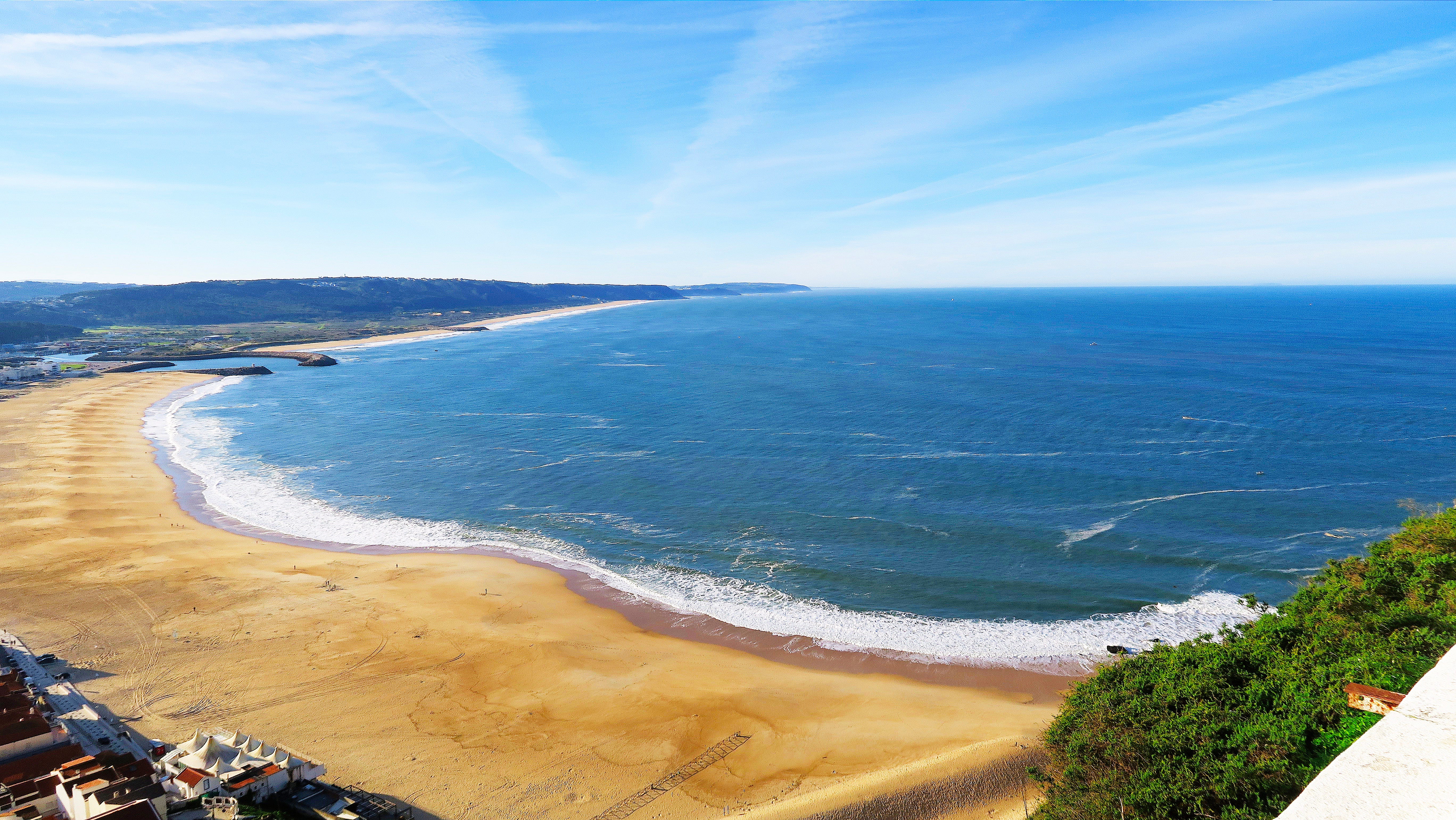




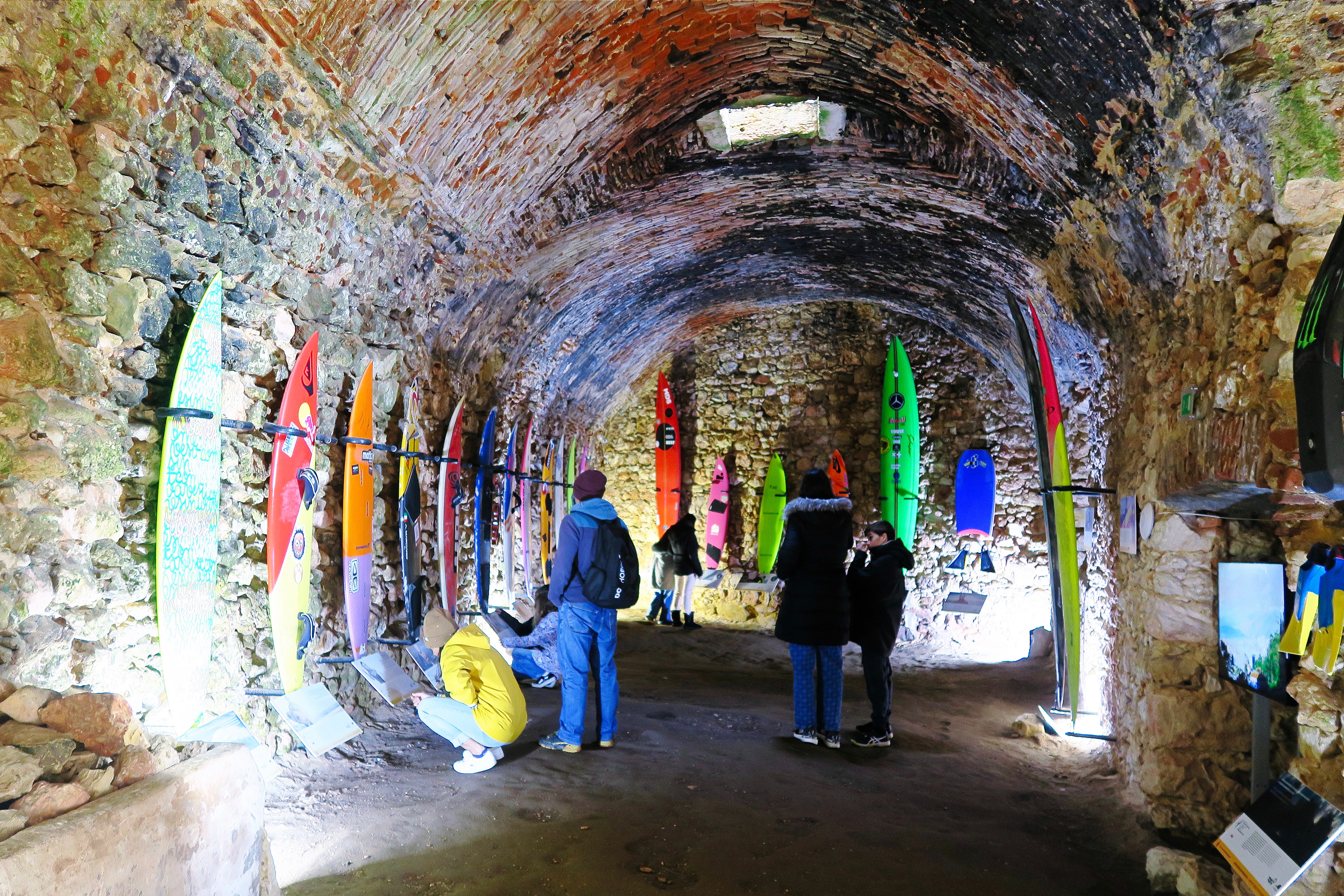

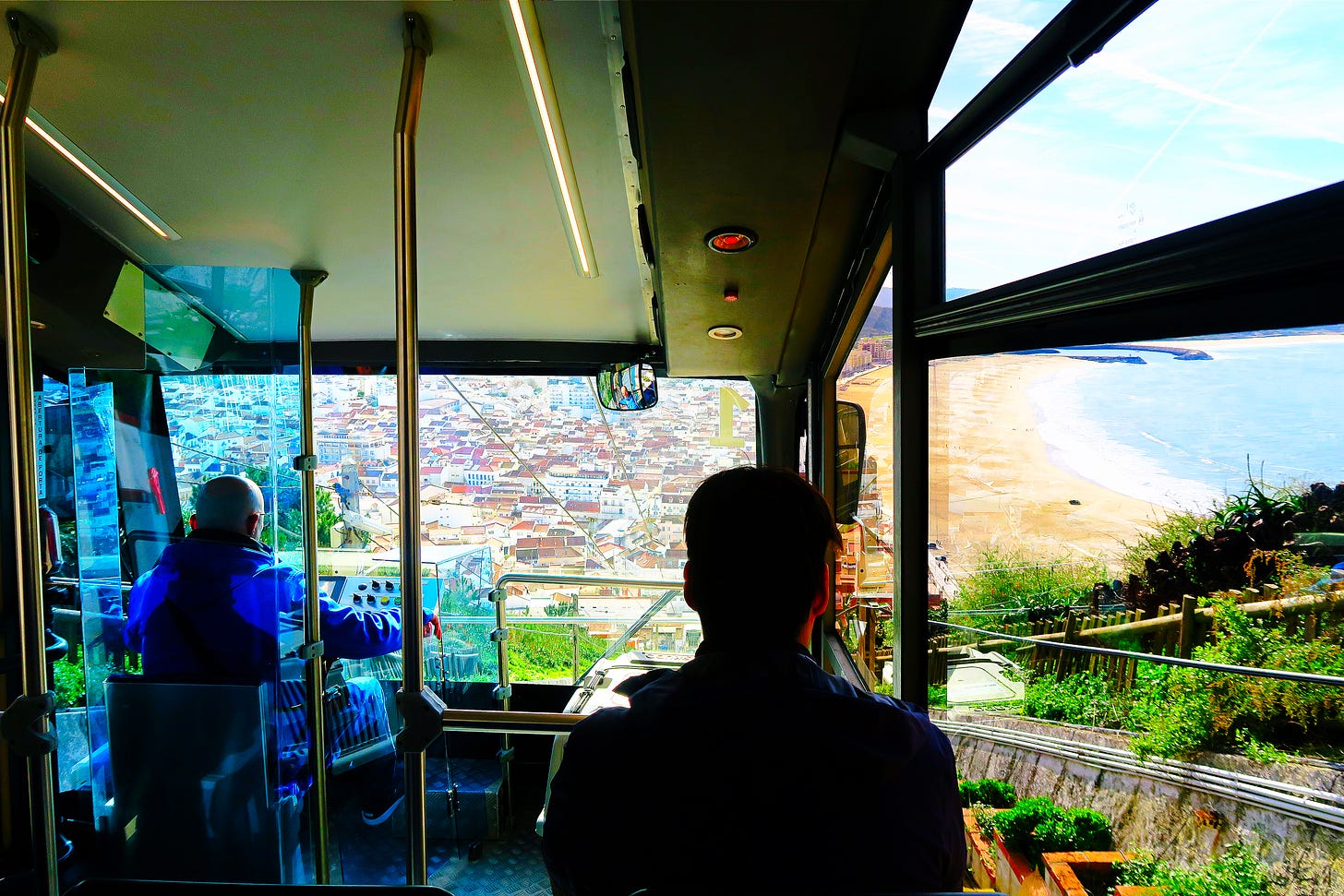

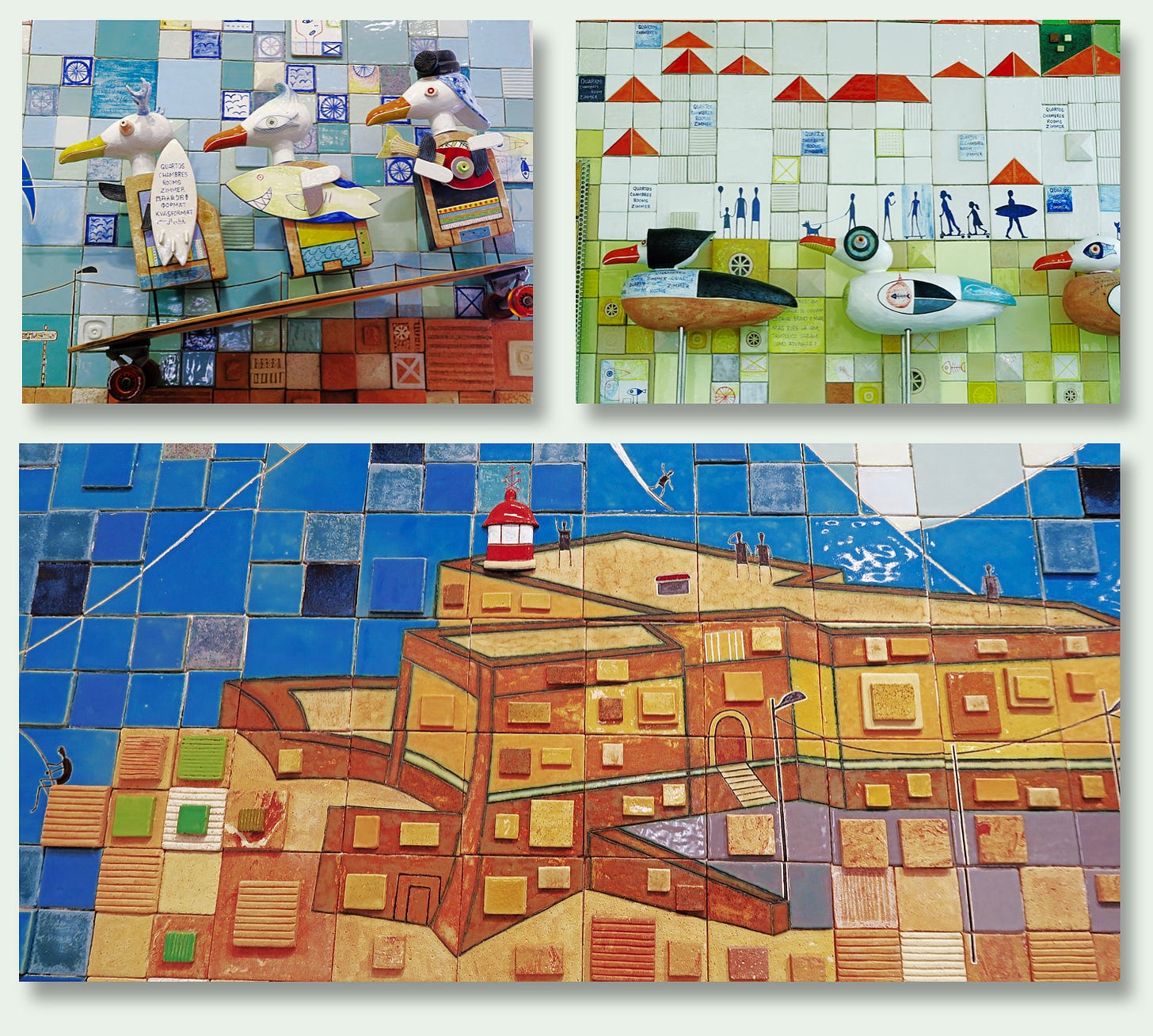
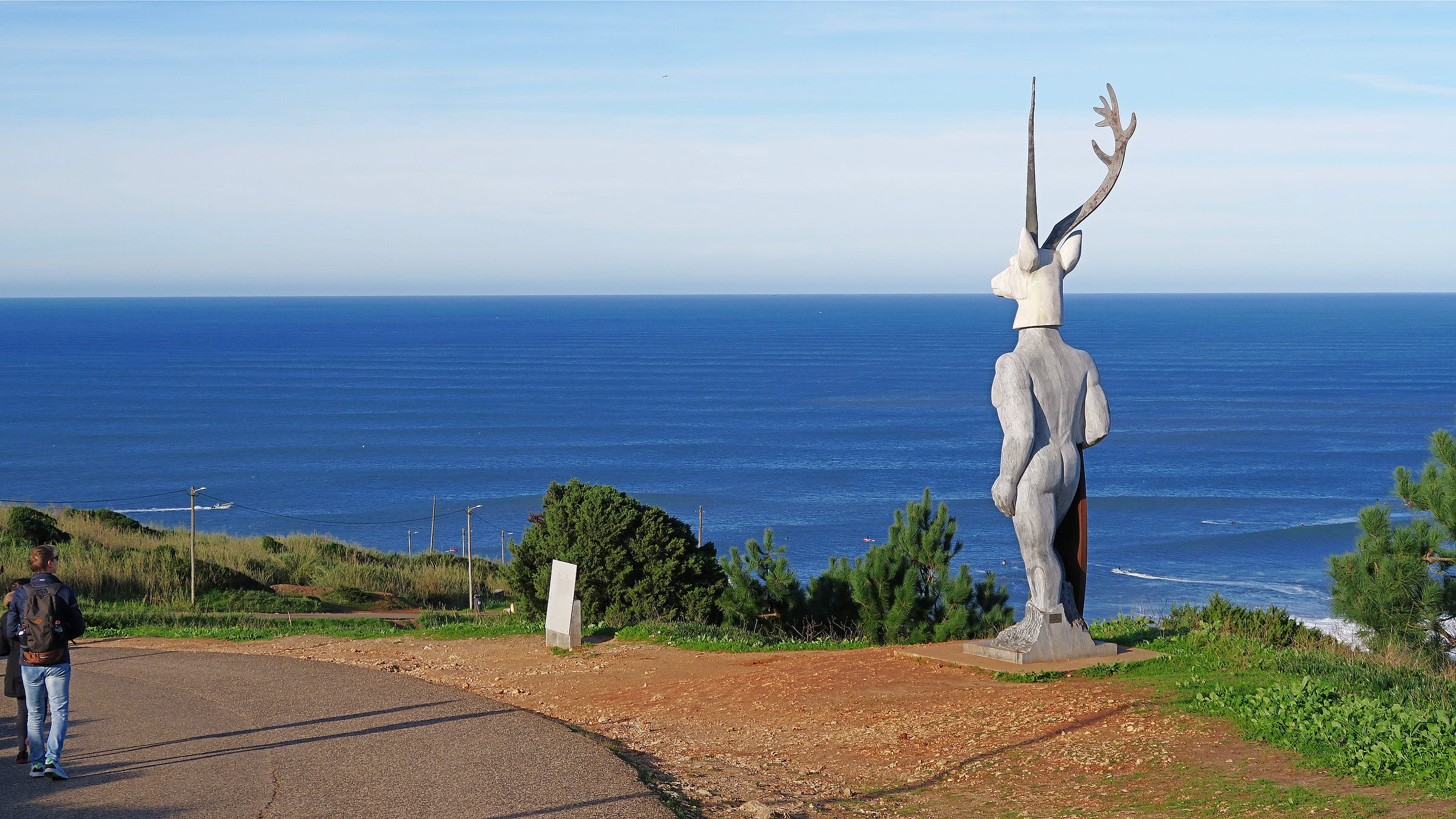

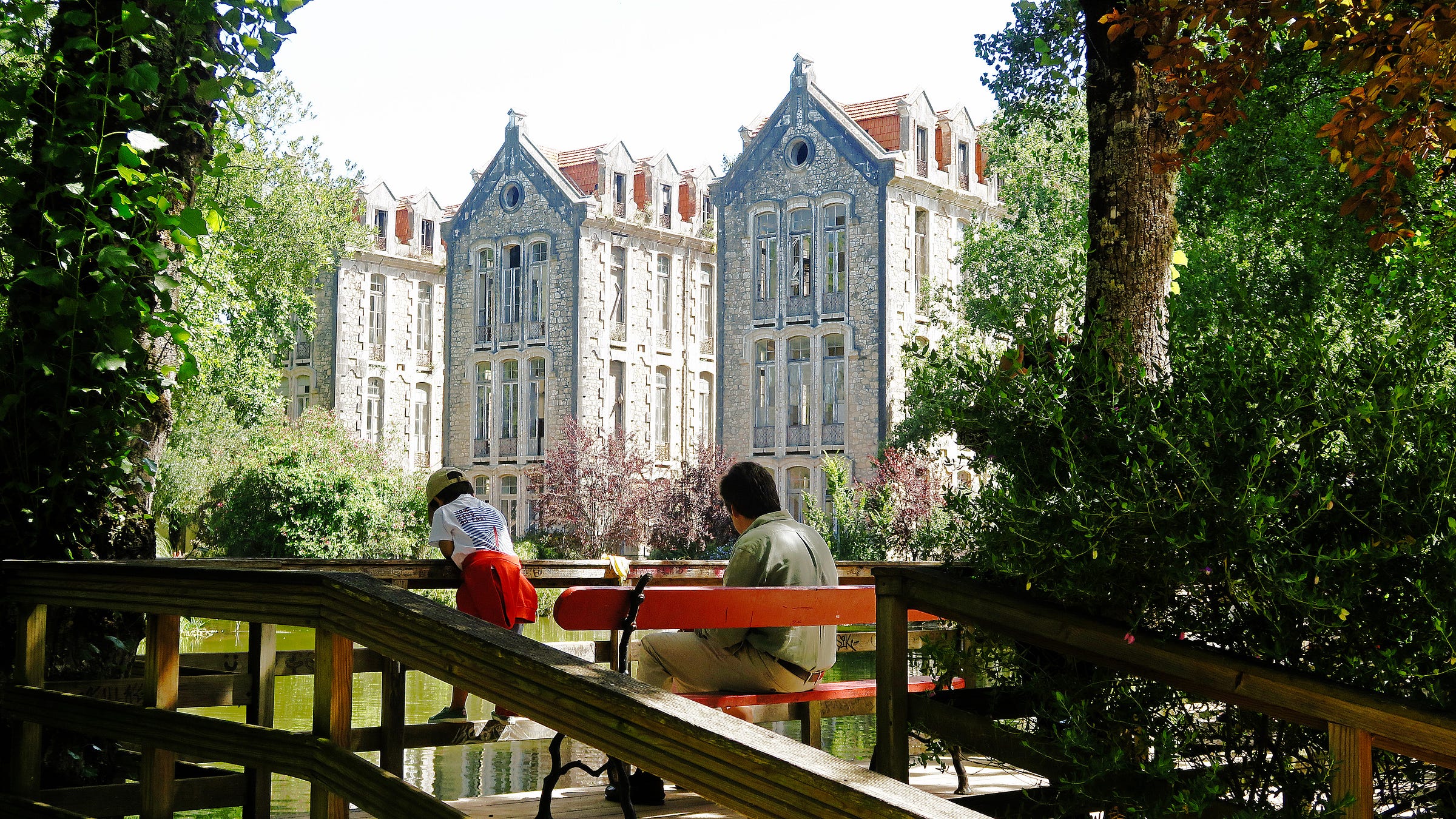


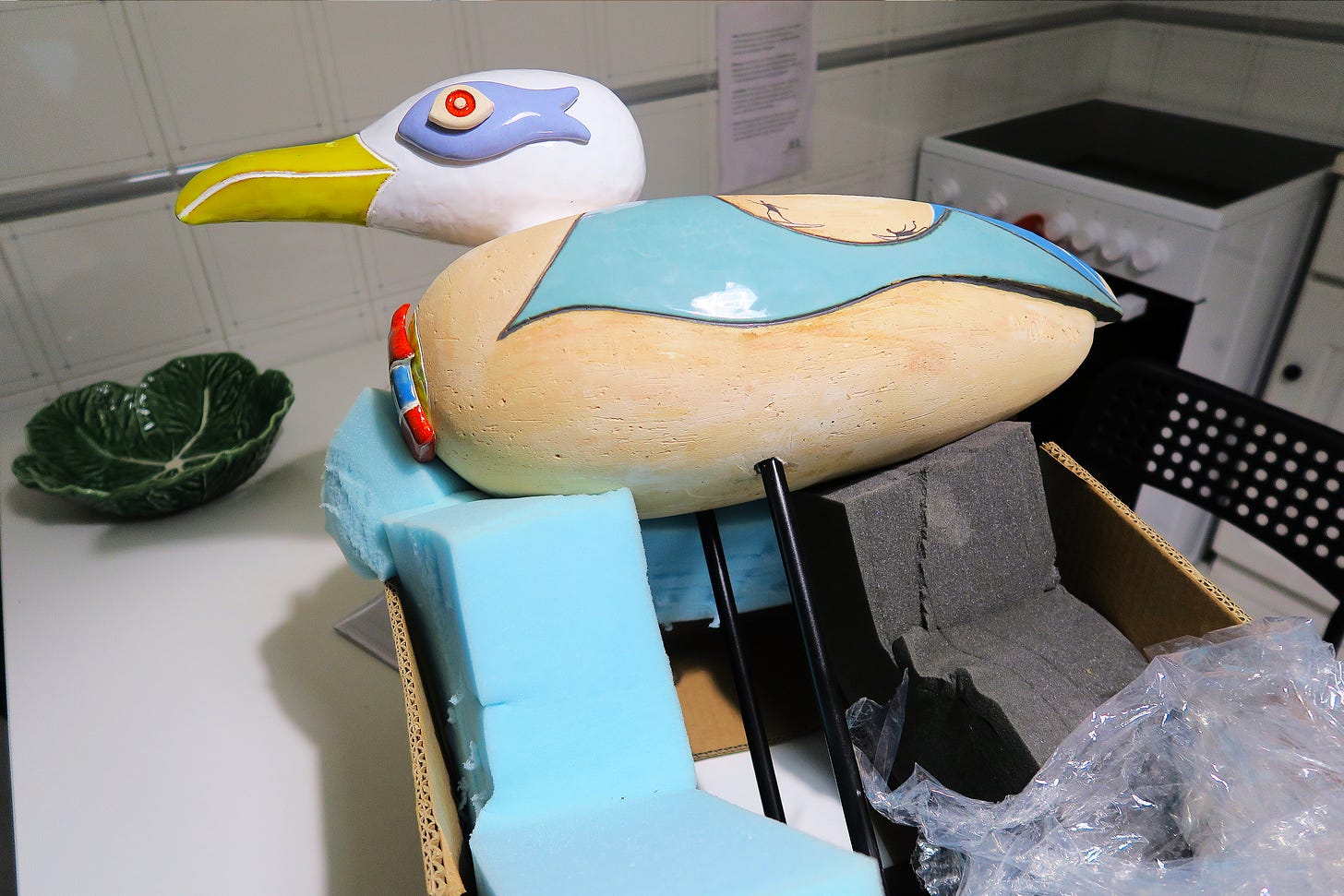



Thanks for this wonderful post. I am even more excited to go to Nazaré, hopefully when the waves are high. But, frankly, anytime would be good for me. I love a good beach town! And congratulations on purchasing one of Marco’s gorgeous gulls! It is beautiful.
Thanks for this wonderful portrayal of your trip, Clyde. The words and images are breathtaking! Love your writing style! Hope to get out to visit you one day.